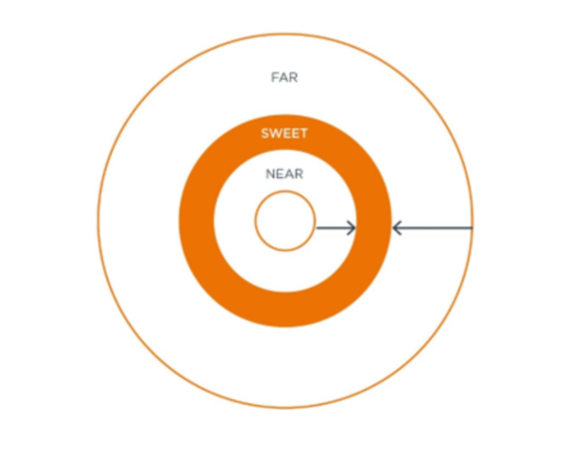
What Affects the Early Stages of Innovation?
In a study on innovation in European countries, innovation researchers wanted to see if understanding different national cultures could help them predict certain behavioral patterns when it came to initiating innovation [*]. To do this, they categorized cultures using four dimensions –– power distance, uncertainty avoidance, individualism-collectivism, and masculinity-femininity — and then tested the relationship between each dimension and innovation. Today, we’ll concentrate on the first two dimensions: power distance and uncertainty avoidance.
Power Distance Measures: Just How Much Power Lies in the Hierarchical Structure
Cultures with large power-distance measures are those with formal rules and a centralized decision-making system. These societies keep information-sharing to a select few — only those in power, know the master plan and everyone else remains in the dark. On the other hand, small power-distance cultures don’t rely so heavily on a rigid chain of command. There’s free-flowing communication between hierarchical levels. Both of these traits help foster an environment where creative thoughts and ideas can flourish, which may ultimately lead to breakthroughs. So, which culture do you think does better in the initiation phase of innovation…the one with small or large power distance? If you guessed small power distance cultures… you are correct! Countries in this category include the UK, USA, Germany, the Netherlands, and Nordic countries[*].
This innovative research shows that high power distance cultures, such as Belgium, France, Poland, and Portugal, may be unknowingly inhibiting their innovation efforts due to this trait. If people are more likely to feel confined and afraid to come up with new ideas for fear of disapproval, they won’t even try. This strategy will severely limit innovation initiation, according to the study. The next dimension may also greatly impact the early stages of innovation.
Uncertainty Avoidance in Innovative Research: Whether Tense Situations are Avoided or Tolerated
You may not think there’s a connection between uncertainty avoidance and innovation, but there is according to the research. See, cultures with high uncertainty avoidance adopt an attitude of “What’s different is dangerous.” People are encouraged to follow the rules to a T — without ever stepping out of line. When this type of environment is created, you’ll often see a workforce that’s unmotivated to think creatively. As a result, they may struggle to come up with new ideas and innovative solutions to existing problems. Not only that, your team may be much more resistant to change. And as you can imagine, this way of thinking can negatively impact your innovation efforts. On the other hand, a low uncertainty avoidance culture constantly revises rules and makes allowances to bend existing ones, given the right circumstances. Cultures that rank low on this dimension also expect conflict and see it as just another part of life. Ambiguous situations are viewed the same way — since they’re inevitable, you must always be ready to adjust your plan and adapt accordingly, two things that work well when it comes to innovation. Now before we dive into the specific traits shown by innovative cultures, it’s important to understand a few fundamental findings first:
“Existing cultural conditions determine whether, when, how and in what form new innovation will be adopted,” as our next study shows[*].
Let’s explore this idea next.
Cultural Impacts on Innovation
Which characteristics do cultures with high innovation rank well on?
Researchers discovered that there’s a greater acceptance of innovation when the foundation is already ingrained in the culture. For cultures built on long-standing traditions, innovation may seem as if it’s going against the societal norms that have been passed down for generations. Therefore, it may not be as well-received or encouraged. Yet, researchers discovered, and research revealed, that when societies are willing to take traditions and adjust them to fit modern times, innovation is much more likely to happen. To that end, there’s one more factor that may contribute to fostering an innovative culture: whether people believe they can make an impact.

Cultural or organizational “class systems” can become like shackles — with people unable to move and think freely.
And when applied to the work environment, it’s virtually impossible to motivate your team or community to work at their potential (or, as often required to innovate, to exceed their potential) when they don’t see their hard work paying off in some regard.
“Most people work in the hope of reward,” and if they don’t see any insight, they’ll be less inclined to work hard. People need to feel like they can make a difference and that their ideas are not only heard but also used whenever possible. And they need to do this in an environment that fosters community and relationships.
For an innovative culture to flourish and thrive, the scientists learned, this form of social capital is needed.
Cultures that adopt these characteristics, plus the ones listed below, are considered high innovators[*]:
- Focus on higher Individualism
- More inclined to take risks
- Willingness to accept and adapt to change
- Future-focused
- Low on Power/Status/Hierarchy (Low Power Distance)
- Weak Uncertainty Avoidance
- Open to new ideas and information
- Willingness to travel frequently
- Positive attitude towards science
- Emphasis on higher education and creating a highly-educated society
- Early adopters
How You Can Apply These Findings to Your Workplace
Now, you can consider how your business might rank in terms of these cultural tendencies.
For example, when it comes to scoring your company’s power distance, which statement do you agree with the most?
- Power and information-sharing stem from the top of the organization. Only high-level employees have the ability to initiate change and innovation (high power distance).
- Everyone on the team is heard equally and ideas are frequently exchanged and discussed fairly (low power distance).
If you want to build an innovative environment, you need to shift towards the cooperative, transparent nature shown by low power-distance cultures. In this type of organization, everyone on the team knows what’s going on and can freely add their input without fear.
What about uncertainty avoidance?
Innovative cultures are willing to deviate from strict rules and guidelines whenever necessary. So, your approach should also be one that easily adapts to new situations and changing times. By setting up this kind of environment, you’ll foster innovative ideas, and you’ll create a motivated workforce at the same time.
Now that you understand how culture can impact innovation efforts, check out this guide to learn more about the most common mistakes companies make when it comes to organizational innovation.








